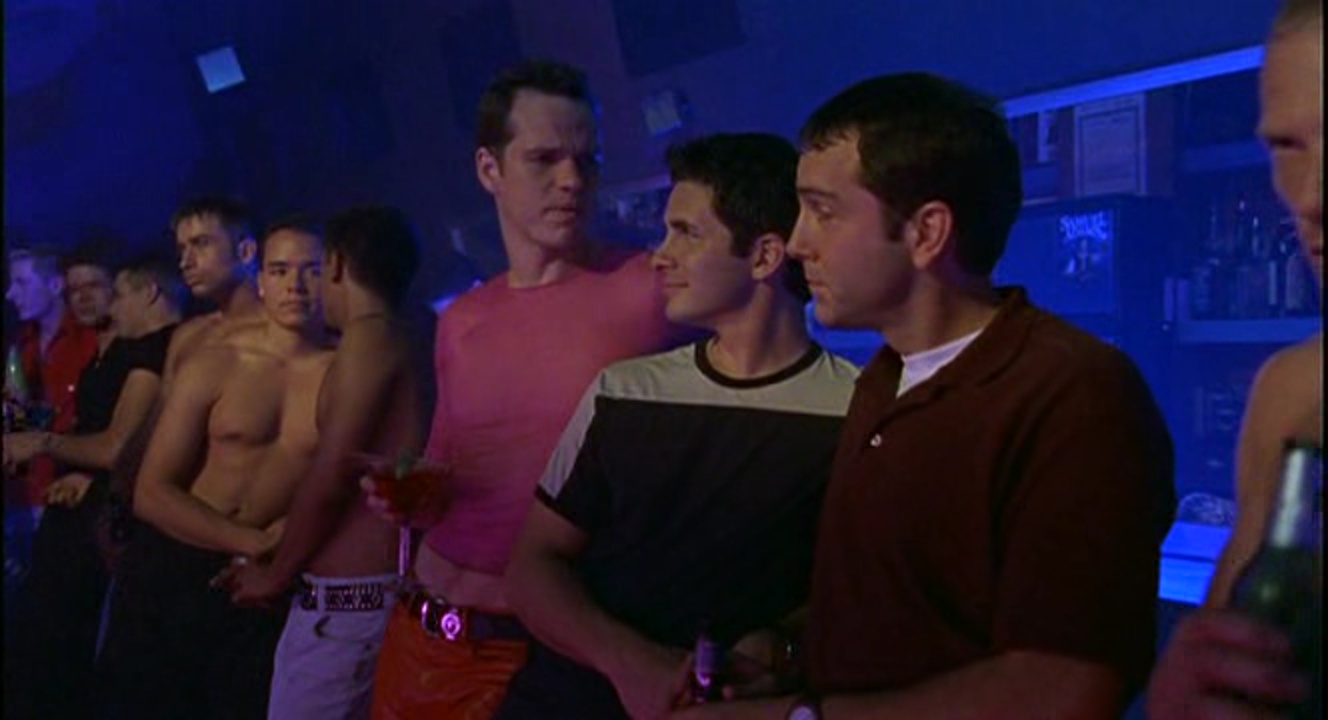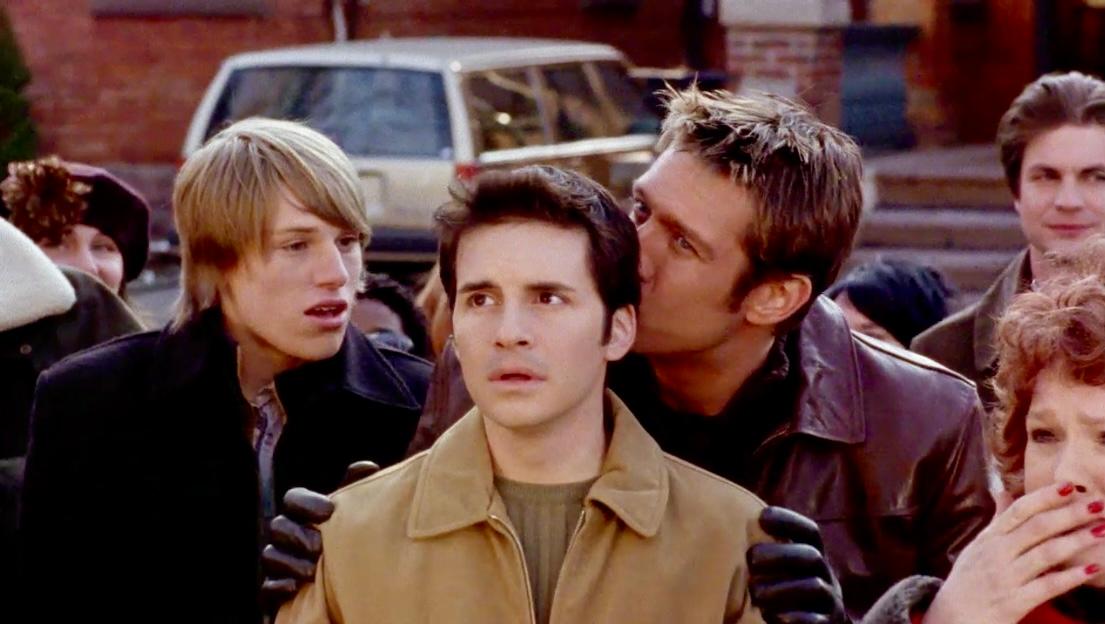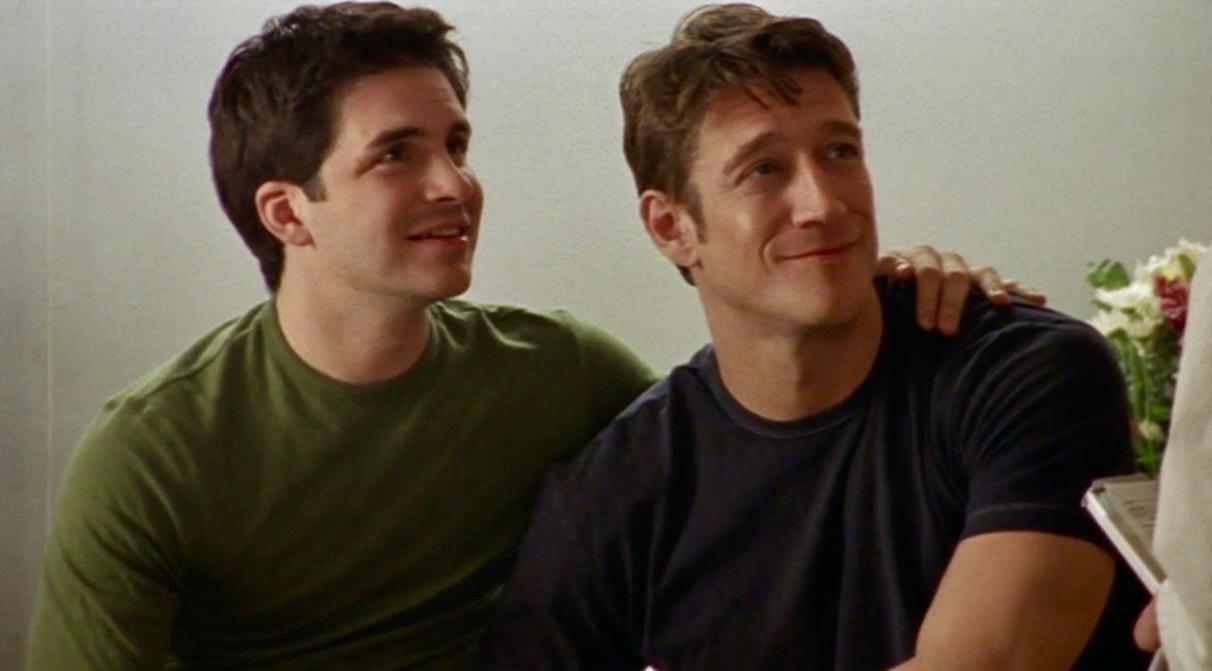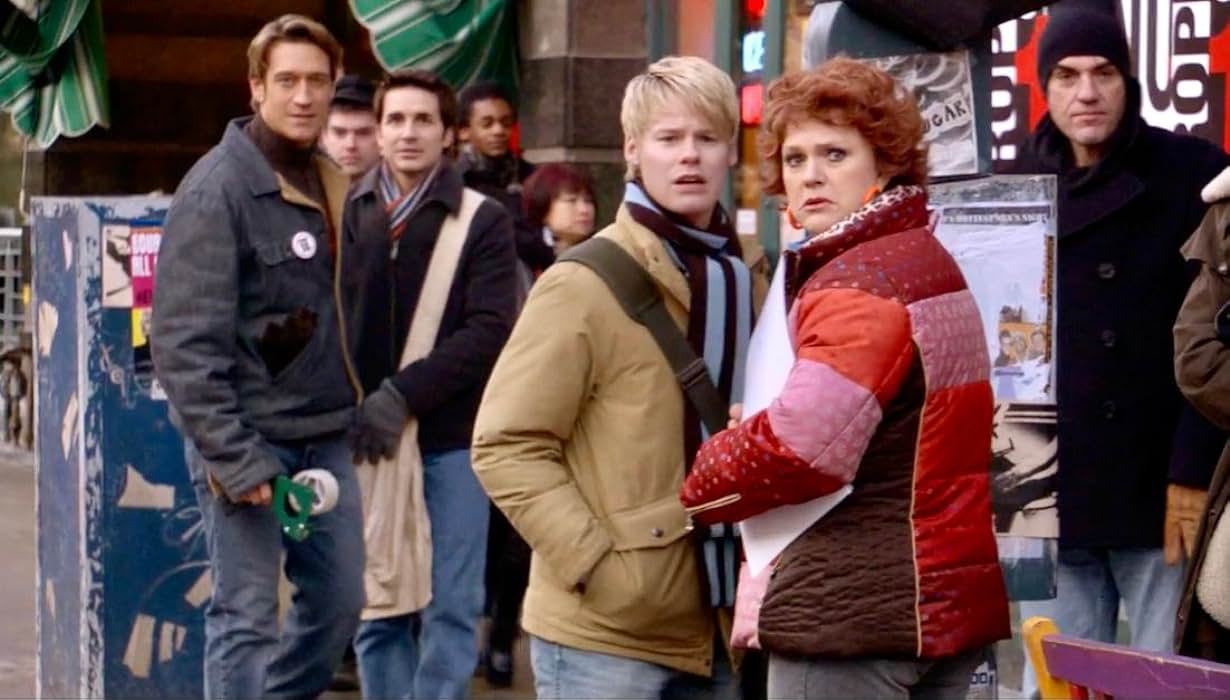
How ‘Queer As Folk’ Created the Blueprint for Current Queer Television
Anyone that was old enough to be watching things on Showtime around the early 2000s will remember a revolutionary TV show called Queer as Folk. Premiering in the fall of 2000, this show showed the world that we could have TV shows that centered completely on the queer experience of all ages.
For the first time, not only was the narrative centered on people in the LGBTQ+ community, but it also had characters of note from all ages.
There was Justin, a young teen just coming of age, the core friend group of the late-20s to mid-30s men and women, and a couple of elder queers to round everything out and have something for everyone.
Not only that, this series was brave and bold in ways most television shows weren’t ready to be at the time. These characters experienced hate crimes, drug problems/accidental overdoses, HIV/AIDS, and struggles with a lack of gay rights regarding their jobs, families, and places of entertainment.
On many fronts, Queer as Folk opened people’s eyes to the possibilities of what representation could be for the queer community. It isn’t perfect by today’s standards, but it definitely opened up the door to allow more varied representation across the board.
Showtime Gave Credence to Complex Queer Shows
By the show’s premiere in 2000, there were definitely examples of queer characters from the past couple of decades. However, Queer as Folk proved to be a first of its kind on American television — the original iteration of the show premiering in the UK the year prior.
Never before had there been a television show that centered completely on the LGBTQ+ experience. Showtime was taking a major risk at the time; not sure how viewers would react.
Luckily for them, it paid off, which allowed the stories of Brian, Justin, Michael, Emmett, Ted, Lindsay, Melanie, and Debbie to continue for five seasons.
Audiences raised on today’s plethora of queer media will never fully understand the struggle older queer individuals had to go through to get just a glimpse of themselves on TV. In the ’80s and ’90s, even for most of the early 2000s, queer individuals weren’t given more than a sidekick role at most.
Fans were just happy to have some of the biggest shows of the day mention a queer person. One of the only exceptions to that was Will & Grace, which hit the airwaves just before Queer as Folk, but despite half of the core group being gay, their identities weren’t given complexity or nuance.
Despite appearing to be a queer show on the surface, Will & Grace still centers on how queer characters can fit into a straight world. However, Queer as Folk showed the TV landscape how to tell queer stories in which queer people aren’t any different than their straight counterparts, so there is no need to “fit in.”
The Evolution of the Queer Character
Prior to Queer as Folk coming on the scene, queer characters were a part of TV, but they never got to be central to the story. At least not until Will & Grace came along.
What Will Truman and Jack McFarlane did for television was alerted the world to the existence of queer people in the world around us. They showed us that they wouldn’t ever be relegated to the shadows once more, but where these characters fall short is in the way they are portrayed.
After all, Will is a straight-seeming gay man — so completely safe and easy to pass as a non-threatening heteronormative man. Meanwhile, Jack was the silly caricature of what was stereotypically thought of when people envisioned queer folks. He was very flighty and feminine and talked in a very “gay way.”

Then in 2000, Showtime looked at British television’s Queer as Folk, created by Russell T. Davies, and said, “Why not do that here in America?” So, the series was born and, as the first season unfolded, took the world by storm.
Because of diverse, dynamic characters like Brian Kinney, Justin Taylor, Michael Novotny, Emmett Honeycutt, Ted Schmidt, Lindsay Peterson, and Melanie Marcus, other creators realized they didn’t have to be limited in how they wrote their queer characters.
As demonstrated by the Showtime series, viewers loved seeing characters with a variety of life experiences and personalities falling under the queer umbrella.
After Queer as Folk came other shows like The L Word and Noah’s Arc, which centered the community from a different lens. Whether it was centering the lesbian, female queer experiences or the male Black queer experiences, these shows were able to build upon what their predecessor did and present their characters as humans who happen to be queer.
Because of these early queer-centered shows, other series over the years have been able to exist, culminating in the addition of casually queer characters existing on shows that aren’t all about queer characters.
If you think about it, we wouldn’t have incredible examples of queer characters on shows like Shadowhunters, Degrassi: The Next Generation, Grey’s Anatomy, Sex Education, Chicago Fire, or Station 19 if we didn’t know that viewers could love and accept queer characters as they truly are.
And shows like Love, Victor, Pose, Our Flag Means Death, or Heartstopper wouldn’t be so beloved if Queer as Folk hadn’t kicked down the door for them decades ago. It’s incredible to think that only a quarter of a century ago, queer characters were only one-offs, the butt of the joke, or extreme stereotypes, whereas now they can exist in many complex forms and still be beloved.
Opened Our Eyes to Queer Families and Unconventional Relationships

Before Peter Paige was changing television by creating the hit show, The Fosters, he was Emmett Honeycutt on Queer as Folk. A show that really got the ball rolling when it came to depictions of queer families and non-traditional relationships.
In fact, Emmett Honeycutt got to be part of a relationship that started when he was a performer on Ted’s porn site.
His partner, during that story arc, ended up being an elderly gentleman who came out late in life and wanted to experience the joys of a gay relationship. Some fans would even argue that George was the best relationship Emmett ever got to have.
During that time, the arc aired during the show’s Season 2, relationships on TV between someone in their late-20s and another person in their 70s or 80s weren’t commonly done — especially not for queer relationships. However, Emmett and George’s relationship is handled with the love, care, and respect it deserves which in turn makes George’s demise that much more devastating.
Another unconventional relationship shown on Queer as Folk was the one depicted between Brian Kinney and Justin Taylor. While the start of their relationship is problematic by today’s standards — Justin was 17 and Brian almost 30 — overall, it speaks to the bigger desire within the queer community to have depictions of more variety in the types of relationships represented.

Brian and Justin’s relationship was always about keeping things open both sexually and conversationally. Of course, Justin, being younger, thinks he’s supposed to want full monogamy in a relationship, but over time, he comes to see the benefits of keeping things open.
There is even a scene during Season 3 where a young hustler named Hunter questions Brian’s relationship status. Brian tells the teen that he is in “a nondefined, nonconventional” relationship. In fact, up until the end of the show, Brian consistently refuses to define his connection with Justin outside of their group of friends or his own partnership.
Television today still struggles to allow characters to have these open relationship models or to even be polyamorous. However, those few examples that we do get to enjoy today — even if they are just illusions to the fact — have Brian Kinney to thank. He normalized being a person who can’t be tied down.

On top of romantic relationships, Queer as Folk was especially good at opening the doors for viewers to see what queer families could look like. Whether it was children through IVF or adoption, this show didn’t shy away from saying that all family types are valid.
In fact, Brian is the father of Melanie and Lindsay’s son, while Michael is the father of their daughter. The show also allows these two men to have moments with their kids despite not being the custodial parent. Brian didn’t ever want to be a full-time parent, but he was there for the women however they needed him in relation to his son.
Michael didn’t cope well with not getting to have custody of his daughter, so that became a huge thing, but at the end of the day, he still got to be a parent. He and his partner, Ben, ended up adopting a young hustler off the streets, giving him a good home and support through his HIV journey.
Peter Paige knew that a show like The Fosters could succeed because he’d been part of a show that championed queer families. He got to see firsthand that a chosen family is often thicker than blood and that there are many ways to make a family.
Bringing HIV/AIDS Out of the Shadows

From the very beginning, Queer as Folk made sure audiences understood that they wouldn’t be shying away from the most difficult topic of all — HIV/AIDS and how it impacts the queer community.
Not only does the show make sure to have characters who struggle with HIV/AIDS, but the topic comes up all the time when the characters are engaging in sexual relations or participating in questionable behaviors.
From the first time they meet, Brian drills into Justin’s brain that he should never have sex with someone without using a condom. It’s a lesson that comes up time and time again, even as Brian and Justin become more serious.
Emmett and Ted each have their own scares when it comes to potential HIV exposure. Emmett gets a scare so big that it pushes him to be the complete opposite of who he is; he aims for straight. Meanwhile, Ted’s situation comes up after he comes down from a major drug bender, in which he doesn’t know what he did during that time.

However, the most significant depictions of this devastating disease coincidentally made it possible for shows like Fellow Travelers to be completely centered on this epidemic and still keep the audience’s interest.
Because this show allowed characters like Vic Grassi and Ben Bruckner to talk openly about their viral load, medications, and health setbacks, viewers were able to find empathy for others on this journey.
And when Hunter, a 16-year-old sex worker, comes along and tests positive, Queer as Folk was saying it’s important to know that the disease can infect anyone at any age. Hunter has to face discrimination from his birth mother and his peers when they find out.
During the early 2000s, we were still barely out of the height of the AIDS epidemic. Therefore, most TV and even film writers were too afraid to even try and tell such stories. However, this queer show on Showtime said, “why not?”
Now, we commonly hear HIV/AIDS talked about in all walks of life on TV. It is no longer just the “gay disease,” and our TV experiences reflect that.
Queer as Folk May Be Flawed, But Its Legacy Is Permanent

As stated before, there are many things about this show that don’t hold up according to today’s standards. However, if we look at the context of the show within the time period it was created, it broke down many walls and barriers.
Back in 2022, Peacock tried its best to rectify the issues of the Showtime series by rebooting Queer as Folk. This version of the show depicted queer folks who were cis, trans, POC, female, male, able-bodied, and disabled. The diversity for this new crop of characters was off the chart, but it wasn’t received well.
The reasons behind that could be explained in another article at another time, but the most significant reason could possibly be that they tried to tie the queer experience to a devastating shooting. The Showtime series did a bombing storyline, but the reboot came out not long after Pulse, so audiences weren’t keen on the tie-in.
Therefore, despite the Showtime series having an alarming lack of racial diversity and centering the story completely on cis-white queers, it still holds up for most people. Typically, the complaints it gets are centered on things that we know aren’t on the up-and-up anymore, so viewers are more likely to remind folks that it is a product of its time.
Despite all this, when Queer as Folk was added to Paramount+ because of the merger with Showtime, it gained a new audience of fans. A new generation of viewers is still discovering this show and falling in love with the characters.
That’s what fully cements the show in the annals of queer television history. As it should be.
Queer as Folk is currently streaming on Paramount+.
![]() Follow us on Twitter and on
Follow us on Twitter and on ![]() Instagram!
Instagram!
Want more from Tell-Tale TV? Subscribe to our newsletter here!


